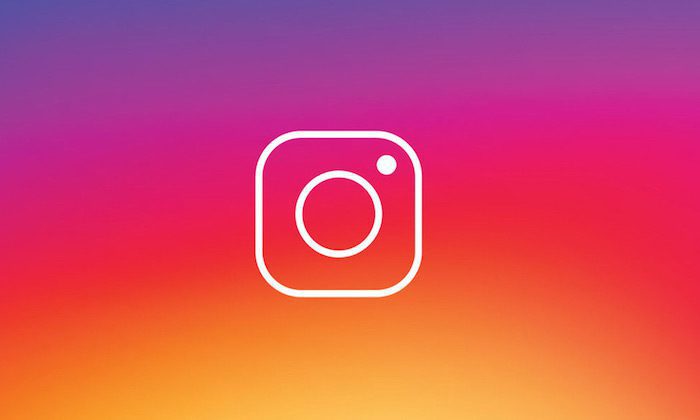
Photo by Karsten Winegeart on Unsplash
Nowadays, social media is an environment for businesses and individuals alike. It’s like a beehive buzzing with interactions and transactions.
What started out as an idea for an online place where people can gather and socialize quickly became much more than that.
Aside from socializing, social media users can browse content, make purchases and conduct all sorts of different activities on their preferred networks. It’s safe to say that social media has become an integral part of our everyday lives.
Speaking of which, most social media users are largely influenced by different things happening on social media platforms. One of the things that are being influenced the most are buying decisions.
People will change their behavior and purchasing habits basically in an instant if the social media influence is strong enough.
But why is that? Well, many online consumers firmly believe that it’s the way it should be.
If you’re following social media trends, you’re making the right decision because everyone else is doing the same.
It’s strange to think about how a couple of online platforms can have such power over purchasing decisions and consumer behavior. But come to think of it, social media is more like an online community than anything else.
With that in mind, here are a few ways how social media impacts consumers buying decisions.
1. A much shorter journey
Online consumers browse the Internet in search of products or services they want to buy. Their buyer’s journey consists of doing research, comparing products and prices, making a purchase and establishing a post-purchase experience with a business or brand.
Many online companies try to be at each step of that journey, so they’ll encourage consumers to pick them over their competitors. Simply put, it can be a lengthy process. On the other hand, that same journey on social media is quite different. In fact, it’s much shorter.
Businesses with the assistance of social media marketing agency leverage different tools and strategies to target specific audiences with a specific message at the right time and place.
There are targeted ads everywhere and consumers can quickly access product reviews and descriptions.
Moreover, they can make a purchase on the spot with a click of a button instead of visiting the company’s website or an online store. The fact of the matter is that 86% of retailers in the U.S. alone have a Facebook page.
The main reason is that 71% of online consumers are more likely to make a purchase due to social media referrals. Therefore, the goal is to shorten the buyer’s journey and not give consumers too much time and space to reconsider their decisions.

Photo by Jon Tyson on Unsplash
2. The power of social proof
Humans are social creatures, which is why so many of them use social media networks. Many companies on social media platforms know how to take advantage of our need for belonging. That’s why social proof is such a powerful marketing tactic.
In case you didn’t know, social proof is a psychological phenomenon where people mimic the behavior of others in order to take action in a given situation.
Simply put, when a large number of people gather in one place, individuals tend to follow others because they think that the group they’re following is more informed about what’s going on than they are.
This happens everywhere in life. Social media is just a place where this phenomenon can be commonly seen and observed.
So how does it work? For instance, many companies leverage creative branding services to establish a strong presence on social media platforms and obtain a large enough following.
Once that’s achieved, a company has to convince a group to take the desired action and the rest of the audience will follow shortly. A good example of this tactic is user-generated content (UGC).
Let’s assume that a company creates a social media contest where followers are encouraged to post pictures of themselves using the company’s products and commenting on their experience.
When other followers see such first-hand experience from other followers, they’re more likely to purchase a product themselves.
3. Fear of missing out (FOMO)
Perhaps the most influential way social media can impact buyer decisions is through fear of missing out (FOMO). This is another aspect of social proof that companies on social media frequently use.
In essence, you create a sense of urgency to encourage people to make a purchase.
Companies do this by creating custom promotional offers on social media. These offers are either discounted promotions that are time-sensitive or promotions with a limited number of products on sale.
Such offers usually involve a countdown timer or a visible number of products that decreases each minute. When social media users see this, they pretty much begin to panic. It comes down to: “If I don’t buy now, I’ll be missing out on a really good deal.”
That’s the whole point. You’d be surprised at just how many people will jump at this opportunity so that they don’t miss out on the deal. That’s why the FOMO tactic is so effective to begin with. Needless to say, people don’t want to be left out.

Photo by Adam Jang on Unsplash
If the group they’re a part of obtains this product and they don’t, an individual may begin to feel as if they no longer belong there.
Everyone tries to avoid such a situation at all costs. They may also feel like they’ve missed out on a really good opportunity to get something for a very fair price.
4. The influence of individuals
You’ve probably heard of social media influencers by now. These individuals hold the most power in impacting consumer behavior and purchasing decisions. If you’re wondering why, it’s very simple. Consumers trust other people more than they trust companies or brands.
Therefore, an individual who reviews company products and makes content out of it is, in fact, a legitimate source of information in the eyes of an average consumer.
If an influencer recommends a product, you can be certain that most of their followers will buy that product. That’s why many companies collaborate with social media influencers.
The fact of the matter is that influencers can impact 20% to 50% of company sales. Moreover, around 50% of Twitter users follow influencer reviews and 40% of them are encouraged to make a purchase after seeing a tweet from that influencer.
Furthermore, 20% of Twitter users are encouraged to make their own recommendations to their friends and family after seeing an influencer’s tweet. This type of social proof can have a great impact on how consumers approach purchasing decisions. After all, it’s all about reviews.
Speaking of which, around 92% of online consumers read online reviews before deciding to make a purchase.
That being said, 84% of online consumers trust these reviews as much as they’d trust recommendations from family and friends. Therefore, having an influencer endorsing your products can significantly impact your company’s sales.
5. Different types of content
Content is the center of all marketing strategies, social media included. Content spreads through social media like wildfire and it can greatly influence consumer behavior and their purchasing decisions. The thing about content on social media is that it comes in all shapes and sizes.
You cannot find more versatile content like on social media anywhere else. Product videos, webinars, podcasts, infographics, articles, blog posts, you name it and you’ll find it on social media networks.
The main reason is that companies that produce content want to establish a more meaningful relationship with their target audience on social media. This allows companies to shorten the buyer’s journey and encourage their audience to take action towards conversion.
Let’s take stories, for example. Instagram stories are basically raw and unfiltered content that gives a glimpse into a company’s culture, products or services.
This type of short-form content can have lasting effects on consumer behavior. By using different content types and social media channels, companies can influence their target audience the way they see fit. In most cases, it revolves around establishing brand awareness and boosting sales.
Since social media is a very dynamic and volatile environment, content can help keep things going in the right direction. It also provides the means for companies to deliver something of value to their audience so that they can keep them engaged and satisfied.
Closing words
Navigating the social media landscape can be quite a challenge. Consumers behave differently on different networks, but they’re all strongly influenced by social media activities and trends.
With the right tactics and strategies, companies can harness the potential of social media platforms to influence consumer buying decisions and behavior.
However, as much as people are social creatures, they are not stupid. You cannot directly manipulate them into doing what you want them to do.
That’s where crafty marketing strategies come into play to help disguise your true intentions. By giving social media users what they want, you can get what you want.
You must give something to get something in return. It’s a rule of thumb on social media.
Author bio
Travis Dillard is a business consultant and an organizational psychologist based in Arlington, Texas. Passionate about marketing, social networks, and business in general. In his spare time, he writes a lot about new business strategies and digital marketing for DigitalStrategyOne.








